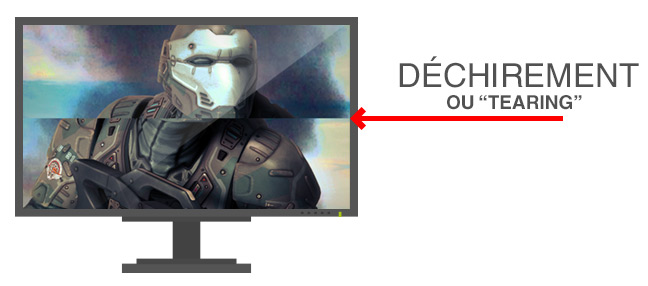…A relentless word processor?
If you mainly use your PC for doing office work, most any monitor should be able to satisfy your needs. However, if you prefer to work in dark surroundings, you will need to pay particular attention to your display’s luminosity level (more complicated than it sounds); you may also want to choose a large-sized monitor which will facilitate on-screen reading (in addition to allowing you to place several pages of text side-by-side in order to increase your productivity!).
Flicker-Free technology
In order to prevent flickering which can cause eye strain over the course of extended work sessions, Flicker-Free technology makes use of a control circuit in order to prevent a display’s backlight from refreshing by delivering a continuous electric current. To test your current monitor for flickering, simply take a few pictures (or record a video) of your monitor in low light conditions and check to see if any black bands appear on the captured images. If you see any of these bands, this means that your monitor is flickering.
…A highly demanding gamer?
Are you looking to avoid high latency and lags at all costs? If so, you should choose a monitor with a fast response time. If you are a really demanding gamer or if you are interested in playing very fast-paced games (fast FPS games for example), choose a monitor with a response time of 2 ms (black-to-black) or less in order to achieve maximum performance. A word of warning: many manufacturers indicate a response time measured from “gray-to-gray” since it allows them to advertise a lower value – make sure you are not fooled by this tactic. You should also select a monitor with sufficiently high resolution (maybe even with 3D capability) to allow you to take advantage of the newest generation of games – provided that your graphics card is able to keep pace. What’s more, a monitor with a high refresh rate (120 Hz or higher) is sure to provide optimal gaming comfort. Last but not least, pay attention to your monitor’s anti-reflective coating as well as its viewing angles since the slightest missed detail while gaming can have catastrophic consequences!
Read More:
Cheap Gaming Monitor
Best Gaming Monitor
Nvidia® G-Sync™ and AMD FreeSync™ technologies
Geared towards the most demanding of gamers, these technologies make it possible to synchronize a monitor’s refresh rate to that of a compatible graphics card. In so doing, these two technologies prevent lagging, image tearing, and high latency – ensuring a more fluid gameplay.
…A passionate movie buff?
Many people no longer see the point in owning a TV, preferring instead to use a PC monitor for all of their entertainment needs. In order for a PC monitor to replace a TV, it should be large, have good viewing angles, have optimal image quality, and have high luminosity (around 400 cd/m² – the luminosity of a TV). It should also possess a wide range of connectivity options in order to accommodate all sorts of audiovisual devices: VGA, HDMI, YUV or S-Video, etc.
…Crazy about computer graphics?
If you are in need of a monitor with faithful color rendition, a high contrast ratio, and high resolution, there are several high-end monitors on the market capable of automatic color calibration thanks to their built-in probes. With this kind of monitor, you will not have to worry about variable renderings or approximate color tones! With the simple press of a button, you will be able to have full confidence in the fidelity of your computer graphics creation!
Anti blue light technology
For some time now “blue light” has become the pet peeve of computer users. Whether or not you believe in its detrimental effects, you may be interested in increasing your own visual comfort by reducing the blinding light produced by your monitor . If so, check out one of the many blue light blocking glasses or monitor filtering technologies available on the market. You can play around with a monitor filter’s settings in order to maximize filtration while minimizing its impact on other colors (less blue means more yellow) depending on your particular usage.
Read More:
Best Monitor for photo editing
Best Monitor for Macbook Pro
